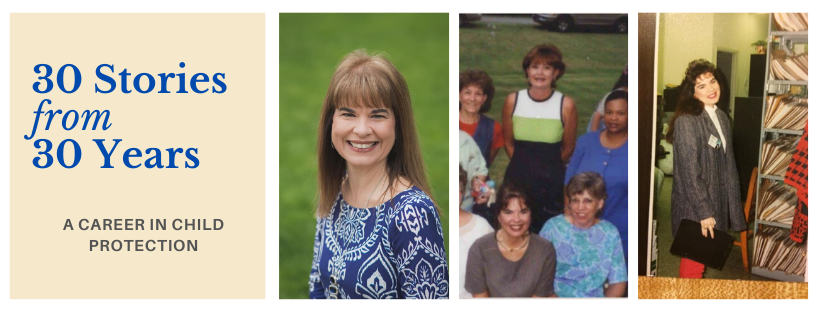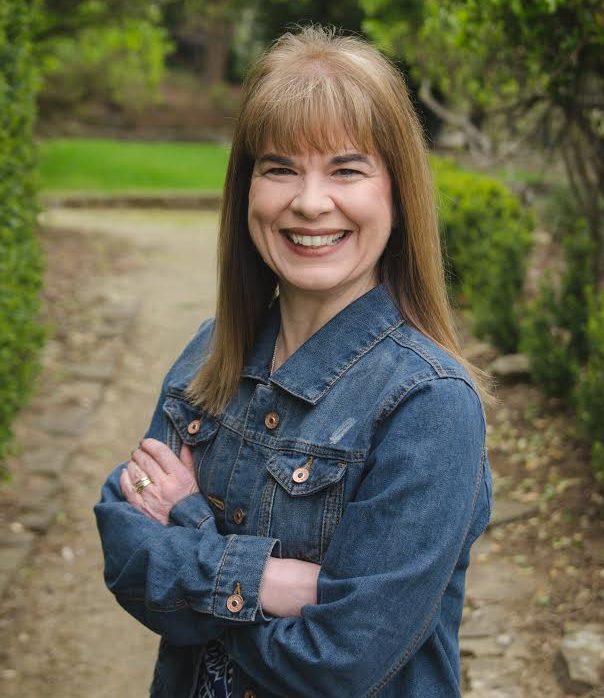
By Tammi Pitzen, Executive Director of the Children’s Advocacy Center of Jackson County
The Secondary Trauma Quagmire
This is story # 5 in Tammi Pitzen’s series of 30 stories from her 30 years working in child welfare.
You can read all the stories here.
Secondary trauma can change you.
It can change how you view the world. It can change how you feel. It can change how you dream. That is even if you are educated on secondary trauma and look for the signs and exercise self-care. Sometimes it is the reflecting back that helps you put it to rest.
My first job in child protection was on a crisis intervention team. We investigated child abuse reports. It was prior to a change in perspective in the field. We were definitely doing investigations versus assessments.
There were levels assigned to each report that indicated the number of steps that needed to be completed and the number of people that needed to be talked to in the case. The paperwork increased with an increased level of risk and increased again if it was found to be true neglect or abuse. In some ways, the things that were apparent got more attention. The ones that were grey or murky could be closed without the full story being told. In those cases, they usually came back multiple times, like a tantruming toddler needing attention.
Most of the really serious cases that I worked either came out of nowhere, meaning no reports made in the past or they were one of those murky grey cases where there had been multiple low-level neglect reports that were closed with no finding for abuse.
In about the second year of my career, I was assigned one of those cases with no history that turned out to be a pretty significant, chronic, heinous abuse case that had a great impact on me. I learned a tremendous amount about myself, about building resiliency, about listening to the silence that is part of many abuse cases.
Silence because children refuse to talk and sometimes silence because they no longer have the ability to talk. In this particular case, it was the latter.
The child was four or five. He presented to the base hospital with a head injury. He had been accidentally run over by a car by a parent. On face value, tragic. The call came in late to me. Both in time of day, but also in the process. In the emergency department, the on-call pediatrician also noted multiple injuries and bruises of various aging all over this young child’s body. The child had to be medevacked to a hospital in a nearby town because the military hospital was not equipped to handle the level of the head trauma.
By the time I got the call, the child had been moved to the other hospital, the parents went with the child and had not been questioned by anyone regarding the current injury or the older injuries.
The child was unconscious and in critical condition. It is never easy for an investigation to catch up to real-time once you are behind. It is also never easy to have to call a judge in the middle of the night and ask for an order of protection for a child and not have all the facts yet. Lucky for me, our process in these circumstances was to have a supervisor make that call. We were lucky and were able to get that order. Due to the gravity of the case, we had to get the orders served right away at the hospital and to the parents. Those were the times you were thankful for the military cases, as it was much easier to make all that happen within the structure of that system.
Rather than go into the details of this case, what I will say is that as a young worker, a young adult, and newly coming out of my sheltered existence, this case hit me very hard.
I held onto the case well past the sixty days allowed. I was investigating this case and every new fact brought on new abuse allegations.
This unconscious child would utter clues. They were garbled. Out of context. As he became more fully awake and regained some speech, they became unimaginable and fantastical. Some allegations against parents. Some involving others. One of those others was a pediatrician in another state.
Each new day brought on a new horror that this child had lived through. Sexual abuse, physical abuse, torture, emotional abuse…. Really a classic target child. It crossed state lines.
I got on a quest. Which is always dangerous in the child protection world. I was going to make everything right for this child. I was going to track down every allegation. Prove or disprove it. I was going to make this child’s future secure from abuse. I was not alone.
The pediatrician who had not reported timely also spent a fair amount of time trying to right his mistake. He wrote a letter of commendation to go in my personnel file for the professional and thorough way I went above and beyond to protect this child. Which to be honest, did as much to make me angry as it did to make me feel good. I was offended as I felt like I handled every case that way. I did not want to be part of the process to forgive his transgression of not calling the report in. He was very aggressive and opinionated and now he was caught in the same lens of judgment that he cast on others and I was not sure I wanted to relieve him of that.
What my quest and misplaced anger looked like was me sitting in my office, crying as I wrote up my case notes. Interviewing every person I could find that had ever had contact with this child. Smoking outsides fuming to anyone who would listen about the injustice of the other state for not pulling the license of the pediatrician who I had initiated a report against. And more crying in my office at the thought of interviewing the little child again based on information coming from statements of the siblings.
In that time, caseworkers were not supposed to cry.
If you cried or felt things, then you were not able to do the job in an unbiased manner. You were not tough enough to do the job. There was no such thing as compassion fatigue, secondary trauma, or vicarious trauma. Those were concepts that came much later. There was no discussion about self-care.
Most of the workers tended to do things together socially as we no longer had friends outside “the system”. We were jaded. We did the exact opposite of what is advised now. We drank together. We smoked our stress away. Back then you could even smoke in your office. Seems absolutely crazy to think back on. Your coworkers became like family because no one else understood. You became inundated with the very thing you were trying to escape.
My quest ended when my supervisor came into my office and I was telling her of the latest allegation that needed to be investigated. She put her hand up telling me to stop. I fell silent. She looked at me and said, “This is finished—close out your case and get your paperwork to me by the end of the week.”
I sputtered all the reasons why I should not…with tears being held back as much as I could. She then shared some wisdom with me from her many years of child protection. She said sometimes it takes years to know all the allegations of abuse perpetrated on a child. Sometimes you never know. There are other children who need your expertise. This child is safe in a foster home with parents who want to adopt him. You have done all that you can.
I went home that night fuming. I wrote out my notes in front of the TV and cried some more. I went in the next day and turned over my case file. I was exhausted. She hugged me. By noon I had two more cases that needed to be investigated.
Later, some of us chuckled a bit about the doctor trying to relieve his guilt by praising my work. We were hardcore. We were cynical. Now looking back, he was probably sincere. Maybe.
This work changes you. You have choices to make about how it changes you. Does it make you angry? Does it make you hostile? Or depressed? Helpless?
There are a couple of “takeaways” in this story.
As a supervisor, know when to step in and guide your staff. As a professional working in the field, learn your limits, and recognize when you stray too far from “center”. Know when you have done all that you can do. There are some really “dark” secrets in this world. Some of us have the responsibility to hear these secrets. That responsibility is an honor. You have been deemed trustworthy to hear the secret.
But this is about building resiliency. How do you build resiliency without building tolerance and immunity?
One way is when you lose your way and become too immersed, listen to the wise person who points that out to you. Another way is to own your feelings. Do not act like you don’t have a response to the terrible things you hear or see. Choose healthy habits to deal with those feelings. Follow good nutrition guidelines. Exercise. Seek therapy. This will be a repeated theme throughout these stories. Sometimes you get so buried in your work, the sadness, the enormity of it; that you cannot see the impact it is having on you. Surround yourself with people you trust, who you will listen to, and who will care enough to point it out to you when you have reached your limit and need to recharge or change your course. (Doing this of course while maintaining confidentiality)
Earlier I mentioned this work changes you. It will do that for sure. I am not the same person I was at 21 when I started working in this field. Part of self-care is, in a career where so much is out of your control, control what you can. You cannot control that the work will change you, but you can control how you integrate those changes. Use your experiences to be grateful for your own life. If you experienced abuse and can’t be grateful for your childhood, be grateful that you were strong enough to survive. Be more compassionate. Trauma explains a lot of our unacceptable behavior, but it is still unacceptable behavior. Give yourself the gift of forgiveness for those behaviors and learn your triggers. Show compassion, when you can, to yourself and to those around you. Do the best you can—every day.
Listen. Listen to those who guide you out of the quagmire of secondary trauma and allow them to help you find safety.
This is story # 5 in Tammi Pitzen’s series of 30 stories from her 30 years working in child welfare.
You can read all the stories here.
#ThirtyStoriesFromThirtyYears #ThirtyFromThirty #ACareerInChildProtection



